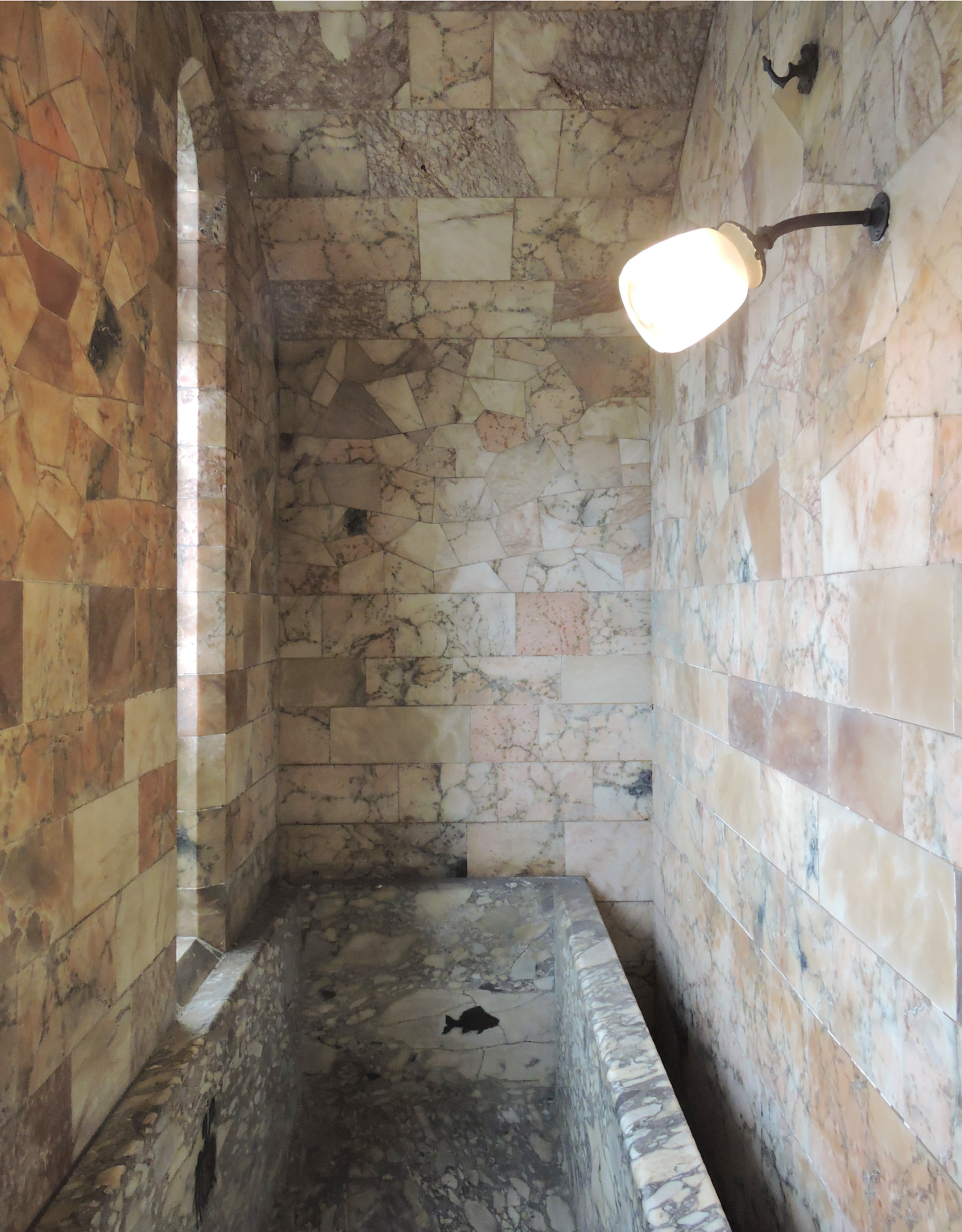The Bedroom Fireplace and chimneypiece

Above the Winter Smoking Room in the Clock Tower of Cardiff Castle is a bachelor's bedroom, designed by William Burgess for Lord Bute's use on his visits to the castle before 1872, the year in which he got married. Unlike his later bedroom in Bute Tower, which would have a Biblical theme, this one pays tribute to the source of Bute's wealth — the mining industry. It is a veritable showcase of precious stones and different types of metal, with the arms on the fireplace exhibiting "specimens of minerals found on the Bute estate" (Snyder 5). They are by no means haphazard: J. Mordaunt Crook explains that "[t]he twelve signs of the zodiac appear in proxy form as their respective precious stones," and that thirty-two types of gems are referenced on the walls (243). The detail is simply amazing. Bute was surrounded by depictions of classical legends and mythology pertaining to precious stones and metals, and when he looked up to the vault he could see portraits of famous "goldsmiths and jewellers ... Cellini, Ghiberti, etc." (Crook 243).
Doorway and bathroom


Left: The doorway arch. Right: The bathroom.
Note the different types of alabaster in the doorway arch, some of which is local Penarth alabaster. The bathroom is also lined with alabaster tiles, some again from Penarth. This was not really a suitable use of the material, because the atmosphere would inevitably be damp, and this kind of alabaster is slightly soluble in water. As Matthew Williams notes, it would also have been chilly (Cardiff Castle, 89). Perhaps it was rarely used. The bath looks quite uninviting: Williams tells us that it was adapted from a Roman sarcophagus, also that it had an extra disadvantage: "Burges enlivened this antique bath ... by setting metal sea creatures into its surface, so that when the tub was filled with water, they appeared to be swimming. An unfortunate side effect of these delightful motifs was that they became extremely hot when the bath was in use, and unwary bathers risked being branded with the imprint of a Burges copper octopus or salamander" (Cardiff Castle, 89). In writing elsewhere about the Arab Room, Williams rightly comments, "The castle's rooms are sometimes impractical, but it was the process of creating them that interested both Bute and Burges" (William Burges, 10). Nevertheless, the later bathroom in Bute Tower looks far more comfortable, so perhaps common sense prevailed in the end.
Other Views of Cardiff Castle
- The castle exterior
- The Winter Smoking Room
- The Summer Smoking Room
- The Arab Room and Banqueting Hall
- The Library
- Lord Bute's Bedroom and Bath
- The Day Nursery
- The Roof Garden
Photographs by Michael Statham and text by Jacqueline Banerjee with help (especially on the type of stone) from Statham. You may use these images without prior permission for any scholarly or educational purpose as long as you (1) credit the photographer and (2) link your document to this URL in a web document or to the Victorian Web in a print document. [Click on all the images to enlarge them, especially to catch a glimpse of the fish in the bathtub.]
Bibliography
Crook, J. Mordaunt. William Burgess and the High Victorian Dream. London: Murray, 1981.
Snyder, Thomas. "The Cultural Landscape of Cardiff Castle." medievalists.net. Web. 15 December 2022.
Williams, Matthew. Cardiff Castle and the Marquesses of Bute. Woodbridge, Suffolk: ACC Art Books, 2019.
_____. William Burges, 1827-81. Andover, Hants: Jarrold Publishing (Pitkin Guide), 2007.
Created 14 December 2022